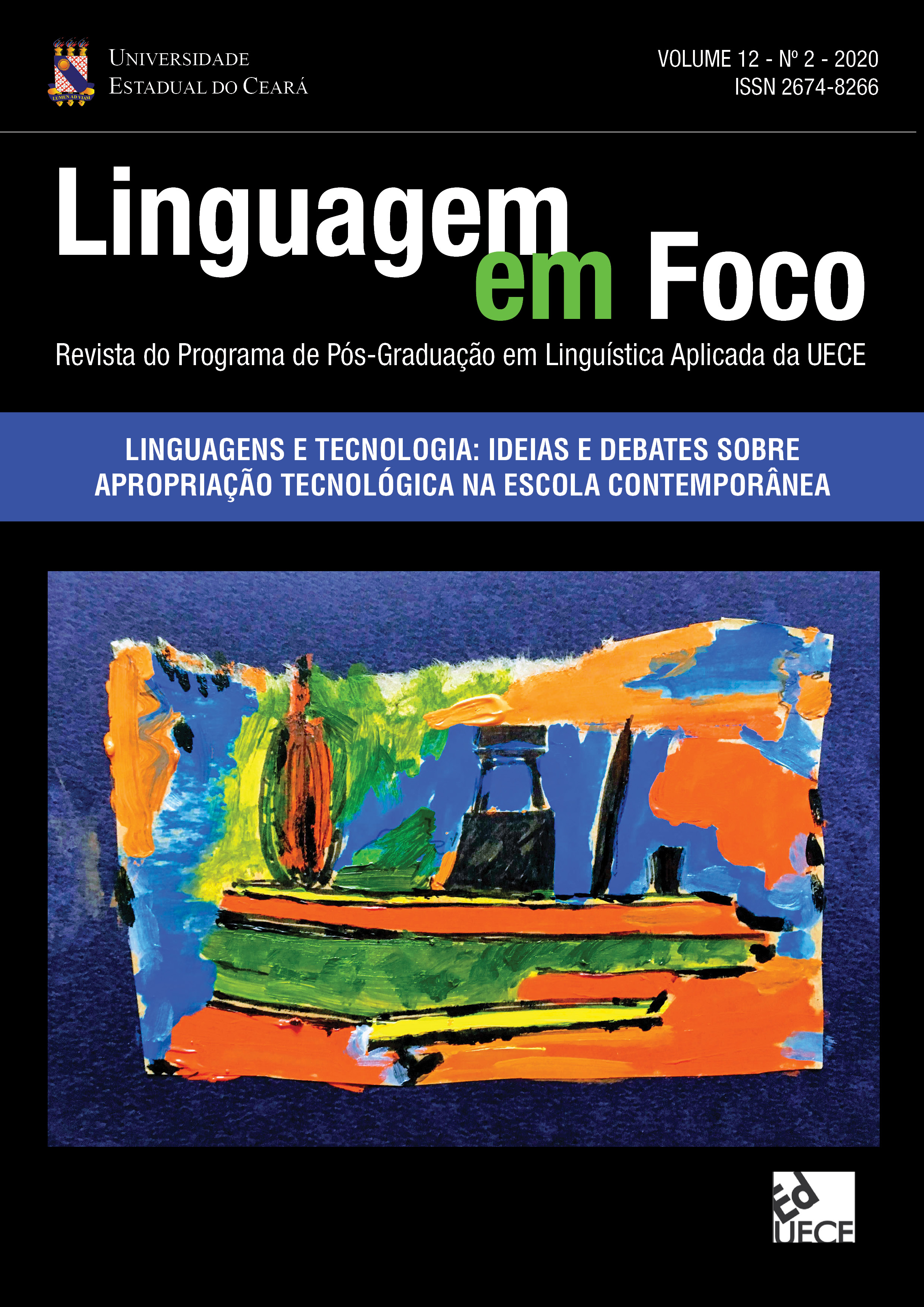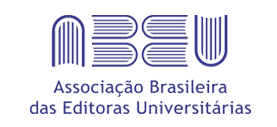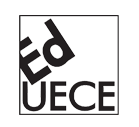Active Methodologies and Foreign Language Teaching
Learning Objects as a didactic resource in the context of Gamification
DOI:
https://doi.org/10.46230/2674-8266-12-3732Keywords:
gamification, learning objects, active methodologies, foreign language teachingAbstract
Given the current scenario, technological tools have stood out as important allies in virtual teaching. In this sense, the present article aims to investigate how teaching practices, especially the ones related to foreign language (FL), can concur for innovative methodological applications when mediated by digital resources, in order to provide suggestions that maximize better autonomy of students. Therefore, we present a contextualization regarding the relationship between Digital Technologies of Information and Communication (DTIC) and the teaching of FL, we point out learning objects (LOs) as accessible tools for the integration of innovative methods, in the context of gamification. From the theoretical perspective of Papert's constructionism (2008) and from the perspective of proposing active teaching methodologies by Filatro and Cavalcanti (2018), we highlight the importance of the student's role in the significant construction of collaborative knowledge production. The methodology of this article focuses on a qualitative bibliographic survey (CRESSWELL, 2010; YIN, 2016) to support the outlined analyzes and the application of LOs. It is observed that the incorporation of educational software and gamification into virtual classes constitutes a challenge, however, we highlight, in the active methods, a bridge strategy in the teaching-learning relationship. Nevertheless, we understand that the integration of digital resources to the teaching context infers new interactive ways of learning, and it seems to touch the intellectual processing of the student (FILATRO; CAVALCANTI, 2018). Therefore, we suggest future research to investigate the use of games in different contexts, focusing on diverse aspects of FL learning.
Downloads
References
ALMEIDA, A. C. A.; MELO, C. I. B.; HARVEY, M. S. S.; LIMA, M. V. A.; CHAVES, P. J. S. Metodologias Ativas à Luz de Comenius: uma Experiência na Pós-Graduação. In: CONGRESSO SOBRE TECNOLOGIAS NA EDUCAÇÃO (CTRL+E), 4, 2019, Recife. Anais do IV Congresso sobre Tecnologias na Educação. Porto Alegre: Sociedade Brasileira de Computação, dez. 2019, p. 60-68. DOI: https://doi.org/10.5753/ctrle.2019.8876.
ALVES, F. Gamification: como criar experiências de aprendizagem engajadoras: um guia completo: do conceito à prática. 2 ed. São Paulo: DVS Editora, 2014.
BRASIL. Lei de Diretrizes e Bases da Educação Nacional. Lei n.º 9.394/96, de 20 de dezembro de 1996. Disponível em: http://www.planalto.gov.br/ccivil_03/Leis/L9394.htm. Acesso em jun. 2020.
BRASIL. Secretaria de Educação Fundamental. Parâmetros curriculares nacionais: terceiro e quarto ciclos do ensino fundamental: língua estrangeira / Secretaria de Educação Fundamental. Brasília: MEC/SEF, 1998, 120 p.
CRESWELL, J. Projeto de Pesquisa: Métodos qualitativo, quantitativo e misto. Editora Sage, 2010.
FERNANDES, E. A ponte para Aprender. Nova Escola, edição 248, 2011.
FILATRO A., CAVALCANTI, C. Metodologias Inov-Ativas na Educação presencial, a distância e corporativa. São Paulo: Saraiva, 2018.
HARVEY, M. S. dos S. O Uso Didatico do Genero Filme Legendado na Aprendizagem de Leitura de Textos do Genero Jornalistico. 2009. Sem Numeração Dissertação (Mestrado Acadêmico ou Profissional em XX) – Universidade Estadual do Ceará, 2009. Disponível em: http://siduece.uece.br/siduece/trabalhoAcademicoPublico.jsf?id=57530. Acesso em: 31 jul. 2020
HUANG, Y.; CHANG, D. Fuzzy detecting the effect of mobile game-based learning for university students. TOJET: The Turkish Online Journal of Educational Technology, nov. 2016, Special Issue, pp. 1070 -1080.
KAHOOT!. Disponível em: https://kahoot.com/. Acesso em 28 jul. 2020.
LIMA, L.; LOUREIRO, R. Integração entre Tecnologias Digitais e Docência: A compreensão de grupos Interdisciplinares. In: XII EDUCERE Congresso Nacional de Educação. PUCPR, 2015, p.33313.
LIMA, L.; L..; PASSOS, C. A interdisciplinaridade na formação docente: Experiências convergentes do PIBID e da Tecnodocência. ENDIPE, 2016. Disponível em: http://www.ufmt.br/endipe2016/paineis-2408/. Acesso em: 13 abr. 2020.
MELLIN, C. Aprendendo a Ensinar. Ed. Quadrangular, 3º ed. SP, 2000.
MORAN, J. M. O uso das Novas Tecnologias da Informação e da Comunicação na EAD: uma leitura crítica dos meios. Palestra realizada pela COPEAD/SEED/MEC em Belo Horizonte e Fortaleza, no ano de 1999. Disponível em: http://portal.mec.gov.br/seed/arquivos/pdf/T6%20TextoMoran.pdf. Acesso em 20 jul. 2020.
MORAN, J.M. Tecnologias Digitais para uma aprendizagem ativa e inovadora. 2017. Disponível em: http://www2.eca.usp.br/moran/wpcontent/uploads/2017/11/tecnologias_moran.pdf. Acesso em 29 de jun. 2020.
PAPERT, S. A máquina das crianças: repensando a escola na era da informática. Porto Alegre: Artmed, 2008, 216p.
QUIZIZZ. Disponível em: < https://quizizz.com/>. Acesso em Jul. 2020.
SALES, J. T. L.; SOUZA, K. F. de. O Ensino de Gramática em Língua Inglesa. 1_ed. Fortaleza: EdUece, 2018.
SILVA, M. M. C. da. Tecnologia digital e língua inglesa: gamificação como proposta didática na perspectiva do construcionismo. 2018. 53 f. Trabalho de Conclusão de Curso (Especialização em Ensino de Língua Inglesa) - Universidade Estadual do Ceará, Fortaleza, 2018. Disponível em: http://siduece.uece.br/siduece/trabalhoAcademicoPublico.jsf?id=89132. Acesso em: 28 jul. 2020.
SILVA, F. W. da C.; TOASSI, P. F. P. O papel dos jogos eletrônicos na aquisição da língua inglesa. Revista do GEL, v. 17, n. 1, p. 259-283, 2020. Disponível em: https://revistas.gel.org.br/rg/article/view/2757. Acesso em: 28 jul. 2020.
SOCRATIVE. Disponível em: < https://www.socrative.com/>. Acesso em Jul. de 2020.
SOUSA, G. M. B.; CARDOSO, L. A. B.; TOASSI, P. F. P. Duolingo as a tool to improve vocabulary writing in English as a foreign language. Letras em Revista, v.9, p.119 – 134, 2018. Disponível em: https://ojs.uespi.br/index.php/ler/article/view/199. Acesso em: 28 jul. 2020.
SOUSA, G. M. B.; CARDOSO, L. A. B.; TOASSI, P. F. P. Duolingo como ferramenta para o desenvolvimento das habilidades escrita e oral de vocabulário na Língua Inglesa. Comunicação oral. Semana Internacional de Letras da UNILAB, 2019. UNILAB, Redenção – CE.
THERRIEN, J.; THERRIEN, S. A integração das práticas de pesquisa e de ensino e a formação do profissional reflexivo. Educação. Santa Maria, v. 38, p. 619-630, 2013.
TARDIF, M. Saberes docentes e formação profisssional. 17 Edição- Petrópolis, RJ. Editora Vozes, 2014.
YIN, R. Pesquisa Qualitativa do início ao fim. Editora Penso. Porto Alegre, 2016.
ZANATTA, R.P.P. Análise de uma Abordagem Construcionista no processo ensino-aprendizagem de conceitos físicos e matemáticos com o uso da Robótica Educacional. In: II MOSTRA NACIONAL DE ROBÓTICA (MNR), 2012, Curitiba (PR). Anais (UTFPR). ISBN:978-85-64992-23-8.
Published
How to Cite
Issue
Section
License
Authors who publish in Linguagem em Foco Scientific Journal agree to the following terms:
- Authors retain the copyright and grant the journal the right of first publication. The articles are simultaneously licensed under the Creative Commons Attribution License which allows sharing the work with an acknowledgement of its authorship and initial publication in this journal.
- The concepts issued in signed articles are the absolute and exclusive responsibility of their authors. Therefore, we request a Statement of Copyright, which must be submitted with the manuscript as a Supplementary Document.
- Authors are authorized to make the version of the text published in Linguagem em Foco Scientific Journal available in institutional repositories or other academic work distribution platforms (ex. ResearchGate, Academia.edu).





























